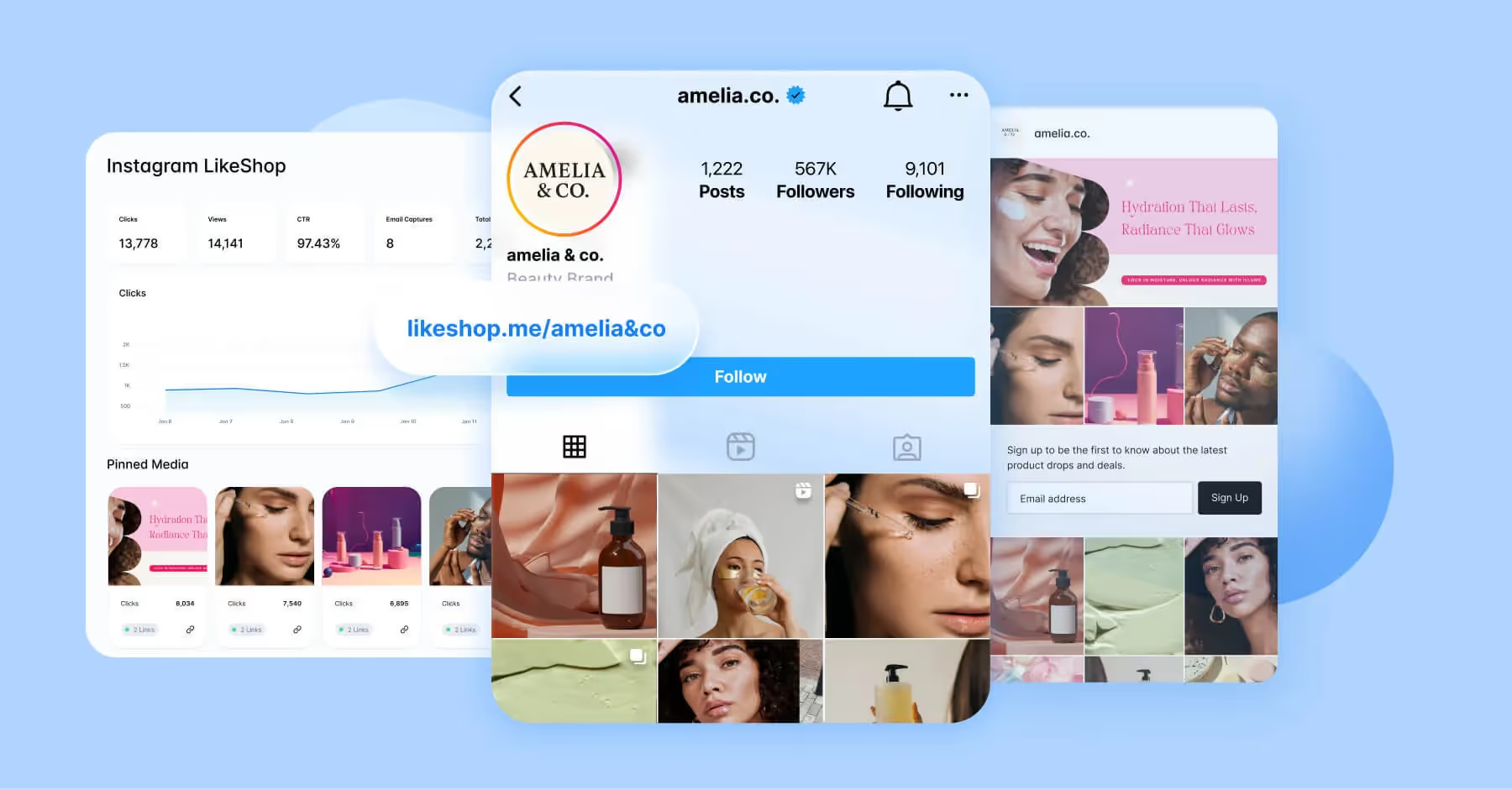What Is Social Commerce? Benefits, Tips and Examples to Succeed
Discover how to harness social commerce and how to turn social media users into buyers.
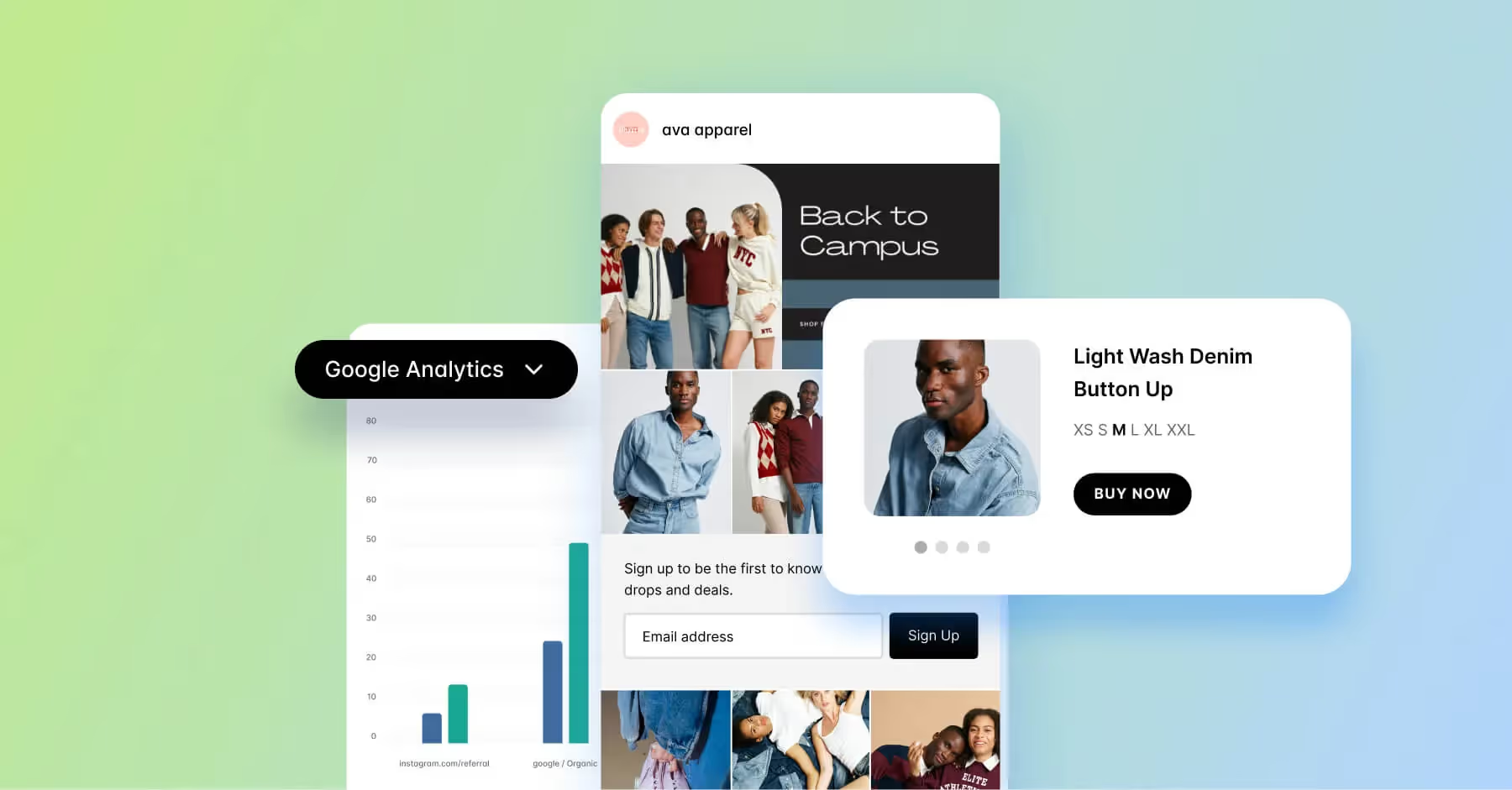
Social media is now a constant presence in people’s daily lives, and platforms have responded by weaving commerce directly into the experience as they compete for user attention. For consumers, the upside is obvious: making a purchase is just a few taps away, right within the platforms they already use.
For brands, though, the rise of social commerce is even more significant and in some cases, a must to stay relevant. Before we dive into how brands should leverage social commerce, let’s break down what it means.
TL;DR:
- Social commerce lets customers discover and buy products directly on social platforms, shortening the path to purchase and boosting conversions.
- A strong social commerce strategy offers benefits like real-time engagement, access to global markets and valuable customer insights.
- Top platforms for social commerce include TikTok, Instagram, Pinterest, Facebook, YouTube and X (formerly Twitter), each with unique shopping features.
- Best practices include leveraging influencers, showcasing user-generated content (UGC), using link in bio tools, adding shoppable galleries and aligning email marketing with social promotions.
- Brands like CB2, eos and Urban Outfitters use creative content and strategic linking to turn social engagement into measurable sales.
What Is Social Commerce?
Social commerce is when people buy products or services through social media. It started with brands posting their products on social media and directing users to their websites, but now, shopping mainly happens directly on platforms like Instagram and TikTok. That means people can browse and buy using TikTok Shops, Product Tags and other e-commerce marketing solutions without ever leaving the app.
While social media still plays a role in guiding people through the buying journey, the number of steps to make a purchase has shortened. Brands and consumers alike now see that social commerce is no longer just an option. It is essential for growth.
Social Commerce vs. E-commerce
Social commerce happens directly on social media platforms, think buying something through Instagram or Facebook without leaving the app. E-commerce, on the other hand, includes all other online purchases usually made on a brand’s website or online store.
Both social commerce and e-commerce sales are continuously growing, with US sales on platforms like TikTok Shop growing 26% in the last year (Emarketer, 2024). As many brands look for new ways to scale, improving the online shopping experience has become a top priority.
While social commerce and e-commerce are technically separate, the most successful brands know how to use them together. Attracting customers on social media and making it easy for them to complete their purchases, whether in-app or on a website.
5 Benefits of a Strong Social Commerce Strategy
As mentioned above, a strong social commerce strategy is no longer an option for brands, it is a necessity. Here are just five of the instant benefits you will reap once you start focusing on social commerce.
1. Shorten the Path of Purchase
Social commerce excels at simplifying the customer journey. Integrated tools, like Instagram’s in-app checkout or TikTok's connected e-commerce platforms, let customers discover and purchase products without leaving the app. This reduction in friction increases the likelihood of purchase completion, creating a more streamlined shopping experience for users.
LikeShop is another great tool for brands looking to drive sales. It lets you turn your link in bio into a shoppable experience, directing users to key product pages. Options include a specific item, a custom landing page with seasonal picks or the latest arrivals. It’s an easy way to add another sales touchpoint and guide users further down the funnel.
2. Gain Customer Insights for More Targeted Content
Another advantage of social commerce lies in the ability to personalize the customer experience. Social platforms provide robust analytics that offers deep insights into user preferences and behaviors. This data enables brands to tailor content, product recommendations and promotional strategies to individual customers, ultimately increasing satisfaction. By tapping into social media analytics tools, brands can identify what resonates with their audience and refine their approach to optimize both engagement and sales outcomes.
3. Boost Conversion Rates
By tapping into customer insights from social media and social commerce, brands can significantly improve their conversion rates. Conversions tend to drop when buyers face too many steps. However, when brands deliver the right content and make it easy to purchase directly on the platform people already use, those extra barriers disappear and conversion rates climb.
4. Reach International Markets
Social commerce isn’t just a local phenomenon, it has unlocked pathways for brands to reach international markets. With platforms like Instagram, TikTok and Facebook boasting global audiences, brands can expand their audience without needing physical retail spaces. This accessibility opens doors to customer segments that were previously difficult to access, leveling the playing field for smaller businesses to compete on a global stage.
5. Enable Real-Time Engagement
Social commerce is a powerful way to deepen customer engagement. With interactive features built into the experience, brands can create moments that feel more personal and memorable than traditional e-commerce.
Take live-stream shopping, for example. Brands that go live see conversion rates between 9–30% (Firework Live Shopping stats, 2025) a huge jump from the typical 2–3% on standard e-commerce sites. Pair that with augmented reality (AR) try-ons, and shoppers can see how products look on them before they buy, making the path to purchase smoother and a lot more fun.
Top Platforms for Social Commerce
E-commerce and social media have been intertwined for a long time, with each platform offering something different. From product discovery features to integrated checkout, many tools are available to grow your brand’s online presence and fine-tune your discovery-to-checkout process.
Here’s a look at some of the most popular social platforms and the social commerce features they offer:
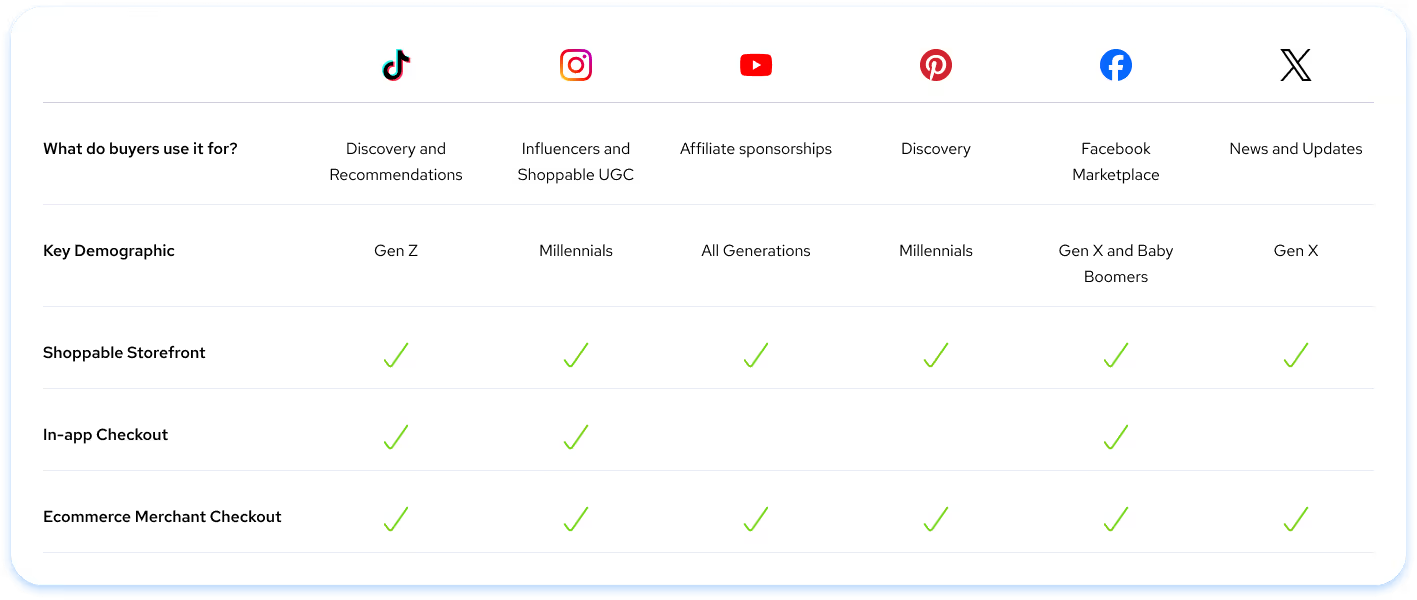
TikTok
TikTok makes the most of its social commerce capabilities, allowing users to check out in-app and brands to share and sell popular products through live shopping, shoppable videos and even a curated shopping page and tab. By maximizing the number of ways consumers can buy and interact with products, TikTok is one of the easiest ways for brands to get started with social commerce.
.avif)
To become a TikTok Shop seller, all brands have to do is sign up using a US phone number and email address, complete the application process and wait for approval from the TikTok team. Once you have been approved you will be able to link your pre-existing TikTok account to your shop and start selling.
Instagram has long been a go-to platform for shopping inspiration, and over time, it’s made the shopping experience easier for both consumers and brands. With Instagram shopping, brands can build a digital storefront, tag products directly in posts, create curated shoppable collections, and showcase detailed product pages all within the app. This means users can browse and buy without ever leaving Instagram.
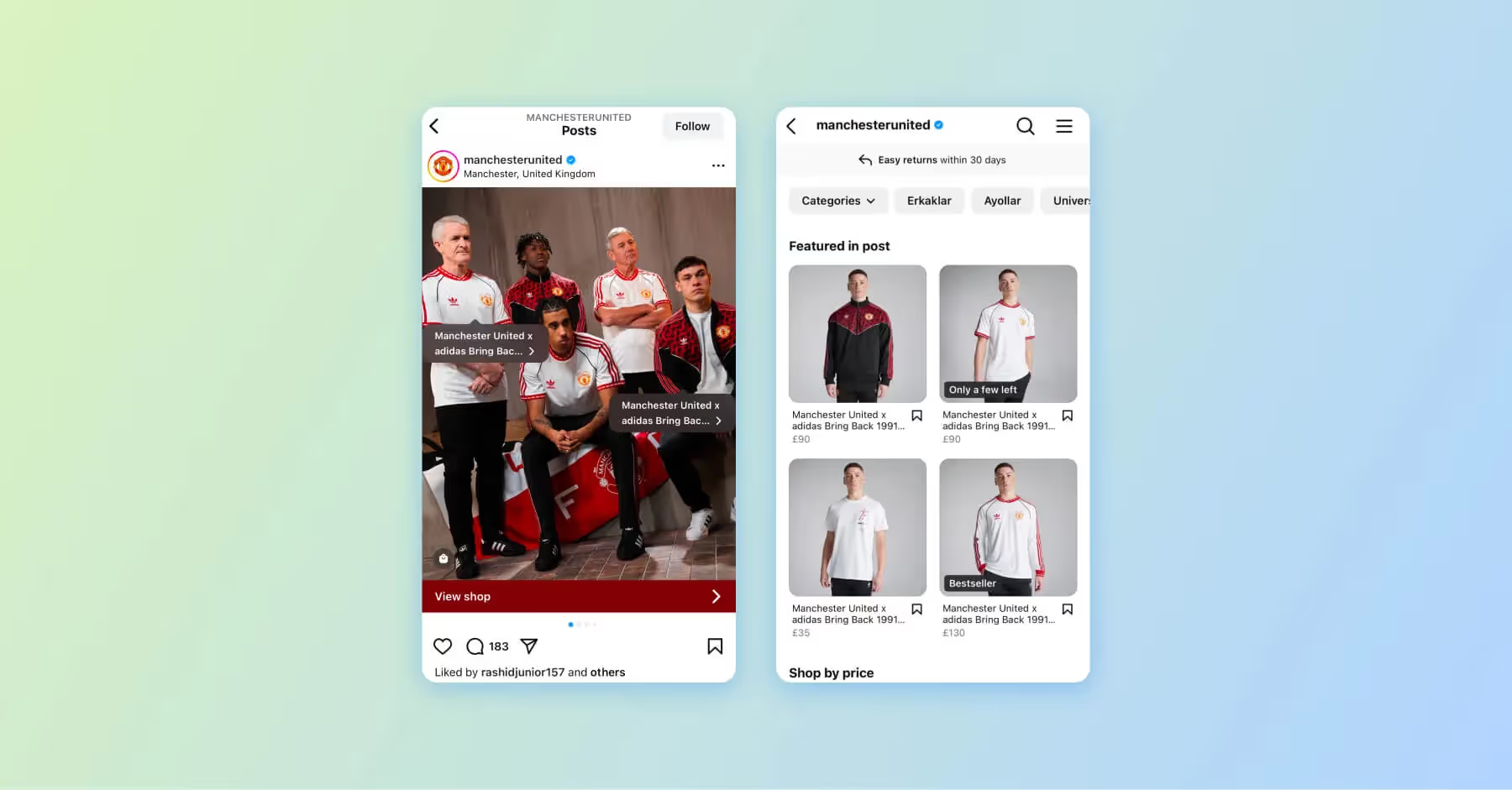
To sell on Instagram, your brand must be an active seller in the markets you want to target and must use Instagram’s Checkout feature. Checkout ensures all transactions on the app are secure, high-quality and consistent. Brands can also expect reliable payouts through the Commerce Manager.
YouTube
Though YouTube has been around the longest, its shoppable features aren’t quite as robust as some other platforms on this list. While the app doesn’t currently support in-app checkout, it does allow brands to connect their online store, tag products in videos, Shorts and live streams and track performance through the shopping section in YouTube analytics.
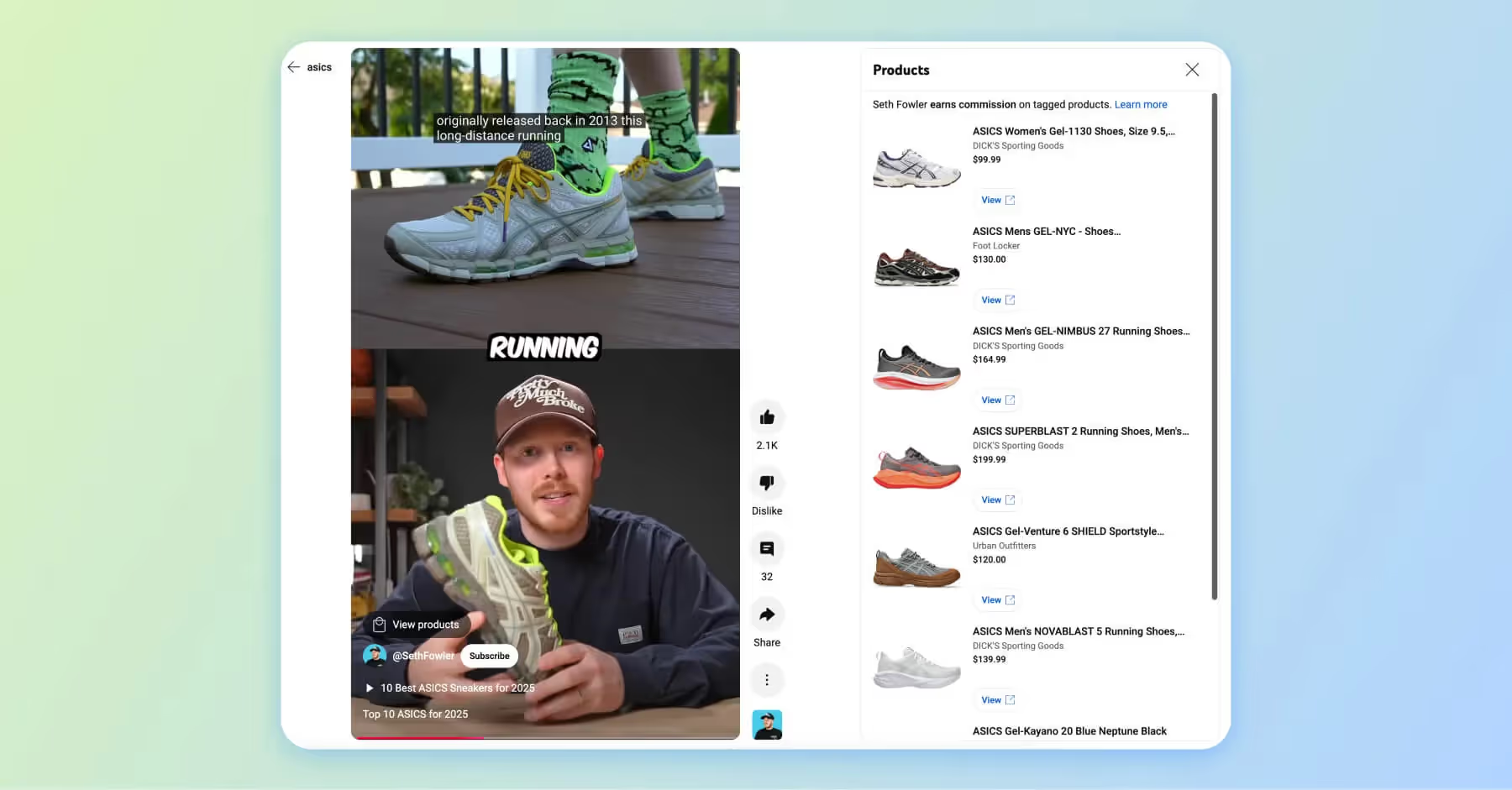
To promote and sell their products on YouTube, brands must first meet the eligibility criteria, which include being part of the YouTube Partner Program, meeting the subscriber threshold, not having any community guidelines strikes and not having your channel audience set to ‘made for kids.’ If you meet all these requirements, you can connect your store to YouTube and start selling and tagging products.
Pinterest stands out in the social commerce space thanks to its strong focus on inspiration and discovery. Its audience often arrives with purchase intent, making it an ideal environment for shopping. Brands can easily create shoppable product Pins, build catalogs that pull product info directly from their website and run conversion-focused campaigns all within Pinterest’s dedicated Shop tab.

Anyone with a Pinterest business account can tag products and create product pins but must go through a merchant review process if they want access to additional features and ads. Though there is no in-app checkout on Pinterest, the app wants to ensure that anyone actively selling and tagging products follows the guidelines to make the best possible Pinterest shopping experience.
Facebook
Facebook is where social commerce took off and has the most sophisticated product catalog on the market (shared with Instagram). With Commerce Manager and Facebook Shops, brands can create customizable collections that can be organized by theme and unified across platforms, making checkout simple and consistent no matter where consumers find your products. Facebook is also known for its robust Marketplace, where users can buy and sell products directly to one another.
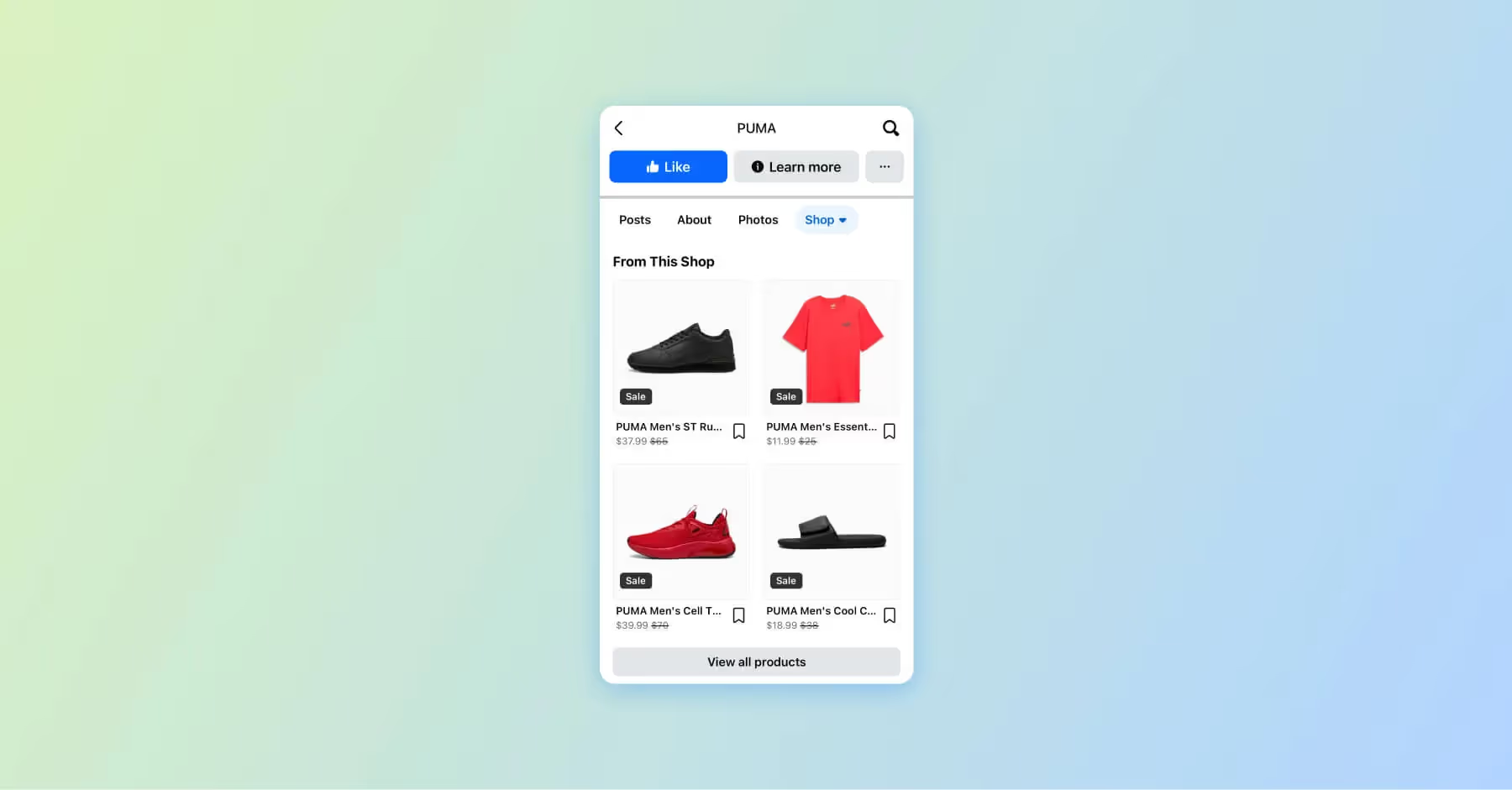
To set up shop on Facebook, you need to have a business page and product catalog. You can then head to the ‘Get Started’ page, which will give you the option to create a shop and connect it to an e-commerce platform like Shopify if you’re already selling from there. After that, you will just have to follow the remaining steps to choose checkout methods, catalogs and more to begin selling within the app.
X
As a text-based and link-sharing platform, X takes a more straightforward approach to social commerce. The app offers X Shops, a virtual storefront that allows brands to highlight up to 50 products, create a customizable showcase for your profile and enable real-time purchasing through Live Shopping.
To use X’s Shopping Manager, brands must have a professional account, comply with the app Shopping Policy and meet merchant business qualifications. Once these steps are complete, you can log in to Shopping Manager, upload your product catalog, and set up your storefront to begin selling on the platform.
While the social commerce tools we mentioned above are the most popular, there are many other platforms and services that brands are using every day for social commerce. Platforms like Snapchat, Twitch, WeChat and Amazon Stores are all making their mark, allowing brands to reach audiences and boost social commerce sales like never before.
Social Commerce Best Practices and Strategies
Like any marketing strategy, getting the most out of social commerce means following a few best practices. While they’re not make-or-break, these tips can help you improve performance, boost ROI and ultimately drive more sales through your social channels.
Leverage Influencers To Reach Different Audiences
Influencers and creator marketing play a vital role in social commerce success. Their authentic connection with followers makes them trusted voices for product recommendations. Brands that collaborate with influencers often see higher engagement and conversion rates, as these creators craft content that resonates deeply with niche audiences. For example, leveraging creator partnerships can help brands introduce new products in a relatable way while also fostering loyalty among their target audience.
Utilize Social Proof by Sourcing UGC
Nothing translates more for consumers than seeing your products in action being used by real people. While you can always source content and UGC creators manually by going through tags and searching your name, many UGC platforms like Dash Social are built to help brands easily find and repost UGC, making it easy and efficient. Social proof has been and always will be one of the most effective ways to market to consumers. UGC is the perfect way to convey that your products and services are worth it.
Upgrade Your Bio With a Link
These days, having a link in bio tool is non-negotiable. While many platforms now support in-app shopping, not every user is ready to make a purchase directly within the app. That’s why it’s essential to give them another option.
With a tool like LikeShop, you can turn your bio link into a customizable hub sending users to your website, specific product pages, campaigns, contests and more. Think of it as a second chance to capture interest and convert users who may not be ready to buy in-app.
Implement Shoppable Galleries for Site Visitors
Once users land on your site, it’s important to make them feel at home. An on-site shoppable gallery helps bridge the gap between your social media and website by showcasing familiar content they’ve already engaged with. These galleries should be regularly updated to ensure consistency with your feed and to maximize the likelihood of conversions from social users.
Don’t Forget About Email Marketing
With all this talk about social, it can be easy to forget the other marketing channels that keep your social commerce engine running. Email plays a pivotal role for hesitant buyers because it’s often the next step in the journey. That’s why your email strategy should be closely aligned with the products you’re promoting on social. Remind users what caught their eye, make it easy to pick up where they left off and consider adding a discount code to help nudge them toward purchase.
Social Commerce in Action With Top Brand Examples
There is no better way to learn than by doing or, at least, by seeing how other brands do it. Below are standout examples of brands putting social commerce strategies into action, along with takeaways you can start applying to your own strategy today.
CB2
CB2 brings authenticity and fresh perspective to its brand imagery by tapping into content creators and UGC as part of its social commerce strategy. Using LikeShop, CB2 seamlessly links its social media content to its website, helping make the connection between inspiration and purchase.

CB2’s strategic use of content across various formats has heightened brand awareness and directly influenced conversions and social commerce for the brand.
Read more about CB2’s social commerce strategy
eos
Eos uses social media to get more people talking about the brand and to help drive sales. They create fun, engaging content around products they know their audience loves, which leads to a lot of buzz online and, in turn, their products selling out fast.

This seamless integration of content and commerce in eos’s strategy underlines the importance of social commerce not just for brand visibility but as a critical driver of the company's overall business objectives.
Read more about eos’s social commerce strategy
Urban Outfitters
While Urban Outfitters prefers to keep its commerce strategy separate from social, its focus on fun, trend-driven content still boosts sales. By staying in tune with what’s popular, the brand ends up driving social commerce even without directly pushing products.

Take the tomato lamp, for example. This quirky, glowing tomato went viral when it hit social media. Urban Outfitters used their link in bio to guide interested followers straight to the product page and demand was so high, the lamp ended up on backorder.
Kickstart Social Commerce With Dash Social
Dash Social is the ultimate all-in-one social media tool for marketers who want to put their best creative forward and drive measurable business and social commerce results. You can analyze your social performance, turn your content into an online catalog and optimize how many customers you are sending to checkout. Dash Social has the Social Commerce tools you need to get started today.
Social Commerce FAQs
How does social commerce work for brands?
Social commerce is the easiest way for brands to meet customers where they spend their time. There are three main ways that social channels allow brands to sell products:
- Integrated product catalogs (e.g., Instagram): Let you sell directly through the platform using a built-in storefront and product tagging.
- E-commerce platform integration (e.g., TikTok): Allows you to connect your online store (like Shopify) to your profile for a seamless shopping experience.
- Direct linking (e.g., X): Lets you share direct links to product pages or special promotions right in your posts.
What is social shopping?
Social shopping is when people discover, explore and buy products and services directly through social media. Many social channels now offer storefront pages that allow brands to sell products through one simple interface that is only a few taps away.
Why is social commerce important?
Social commerce is important for brands because it brings shopping to where people already spend their time, on social media. Instead of asking customers to leave their favorite apps to make a purchase, brands can now meet them right there, making the path to purchase faster and easier.




